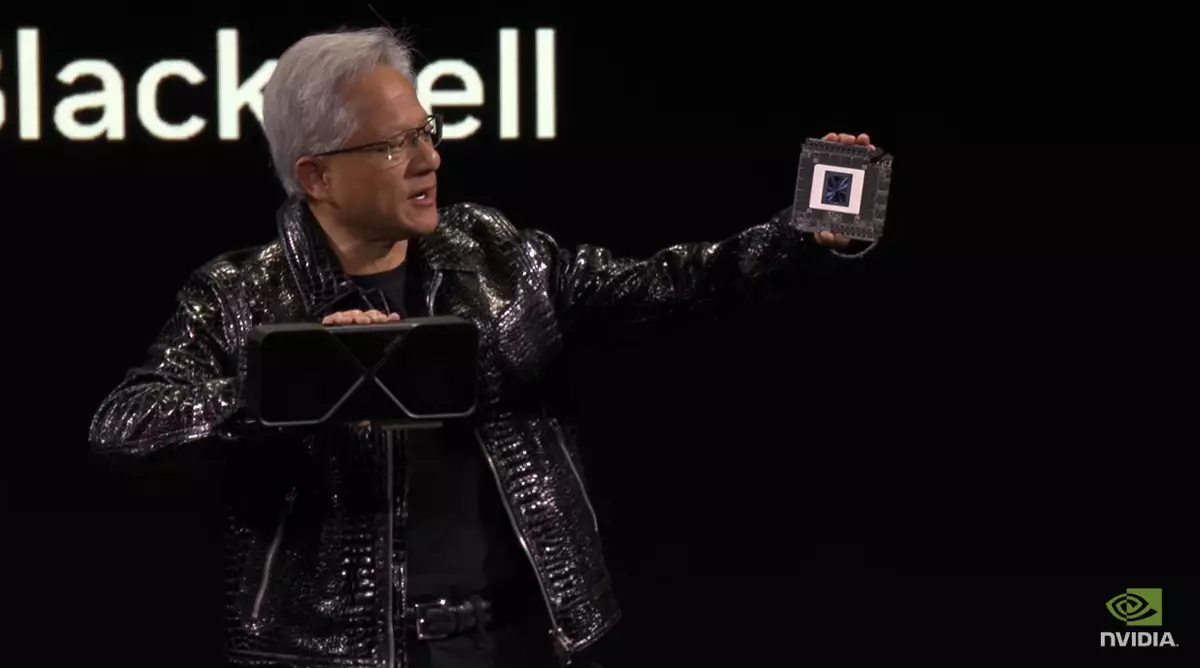At the recent CES 2025 keynote, Nvidia CEO Jen-Hsun Huang unveiled an ambitious new lineup of graphics processing units (GPUs) named the RTX Blackwell series. The standout component, the RTX 5070, challenges preconceived notions of performance and pricing within the GPU market. Huang claimed this new card delivers RTX 4090-level performance for an astonishing $549. This revelation raises questions about where value and performance intersect in the rapidly evolving tech landscape.
Historically, Nvidia’s flagship GPUs have carried a hefty price tag, with the RTX 4090 costing a staggering $1,599. The idea of a mid-tier card, like the RTX 5070, offering comparable performance for a fraction of the cost is electrifying. It suggests that consumers no longer need to shell out exorbitant sums for high-performance computing. However, it’s crucial to consider that the RTX 5070 may not completely replicate the RTX 4090’s capabilities under every circumstance but is optimized for an experience that leverages Nvidia’s cutting-edge technology.
Nvidia’s advancements in Deep Learning Super Sampling (DLSS) technology play a pivotal role in this performance surge. With the introduction of DLSS 4 and its Multi Frame Generation feature, the RTX Blackwell series can effectively multiply frame generation, processing one frame while utilizing AI to generate additional similar frames. This enhancement essentially allows the RTX 5070 to compete with the RTX 4090 under specified conditions, particularly within a suite of supported games and applications.
Central to Nvidia’s claims about the RTX Blackwell’s capabilities is the novel transformer model underpinning the DLSS technology. Rather than just raw power, the RTX 50-series hinges on intelligent computation, optimizing performance through advanced techniques. The four-card lineup features not only the RTX 5070 but also higher-tier options like the RTX 5080 and RTX 5090. These cards promise unprecedented performance metrics; the RTX 5090 reportedly aims to deliver double the performance of the previous top-tier card.
One might wonder why the RTX 5080 remains at the same $999 price point as its predecessor, the RTX 4080. The answer likely lies in the expected advancements in performance achieved through DLSS 4. Although maintaining the same price may hint at price stability in the market, the innovations in technology could make the new generation cards invaluable assets for gamers and professionals alike.
The immediate response to Nvidia’s announcement has been mixed, integrating excitement for the lofty performance claims with skepticism surrounding the practical implications of such advances. Many industry analysts had anticipated significant price hikes with the new generation due to the shift in technology. Nvidia’s decision to keep certain models at previous price points goes against that narrative and has somewhat reassured consumers who feared they would be priced out of high-end gaming.
The planned release schedule, with the RTX 5090 and RTX 5080 launching on January 30, followed by the RTX 5070 Ti and RTX 5070 in February, will be a crucial moment of truth. While the specs and pricing are enticing, actual performance can only be confirmed through real-world testing once these cards enter the market. Enthusiasts and casual gamers alike will be on high alert, awaiting benchmarks to understand how these promises of performance pan out.
Nvidia’s RTX Blackwell series could signify a paradigm shift in the graphics card market, balancing budget friendliness with cutting-edge technology. The potential to rival past top-tier offerings like the RTX 4090 while introducing a more affordable range may redefine consumer expectations. As we inch closer to the launch dates, the dual promises of enhanced performance alongside manageable pricing leaves the gaming community teetering between anticipation and a cautious wait-and-see approach. The real test will be how these cards perform across varied workloads and for diverse user needs, potentially rewriting the rules of the GPU game.


Leave a Reply